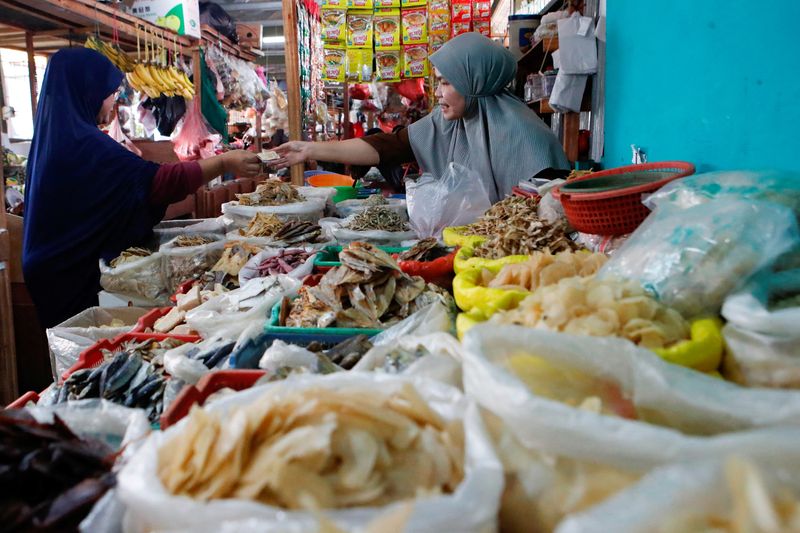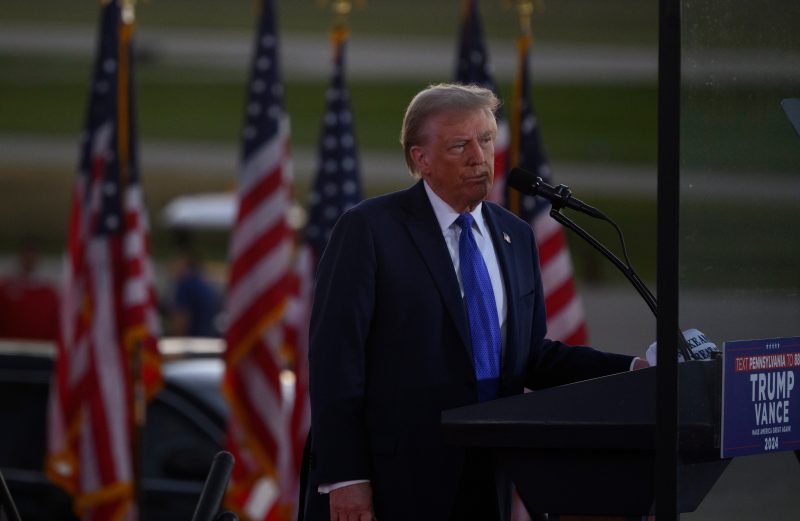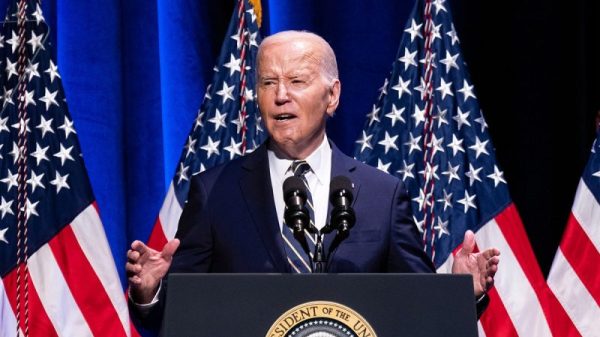
By Stefanno Sulaiman
KARAWANG, Indonesia (Reuters) – Rahmat Hidayat lost his job when the shoe factory he worked for closed down last year in the industrial town of Karawang in Indonesia’s West Java.
The 44-year-old now earns less than half of what he used to make by selling grilled meatballs. Unable to afford his wife’s diabetes medication, Rahmat picks herbs to make a tonic instead.
Like Rahmat, millions of working to middle class Indonesians have become poorer, largely due to an increase in layoffs and a drop in the number of job opportunities since the pandemic.
This trend bodes ill for the outlook for Southeast Asia’s biggest economy – household consumption accounts for over half of gross domestic product – as well as the widely held investment thesis that an expanding middle class will drive Indonesia’s ambition to become a high-income nation by 2045.
It also poses a challenge for the incoming administration of President Prabowo Subianto, who won a February election by a landslide on promises to boost economic growth and create 19 million of jobs. Prabowo takes office on Oct. 20.
“Pushing the economy to grow higher with weak consumption is difficult,” said Mohammad Faisal, an economist at the Jakarta-based Center of Reform on Economics.
The government classifies those who spend between $132 to $643 a month as middle class, based on a World Bank criteria. This group is key to economic growth as their spending accounts for nearly 40% of private consumption, and more than 80% if combined with the aspiring middle class, who spend $57 to $132.
The size of the middle class, however, has dropped from 21.5% of the total population in 2019 to 17.1% in 2024, according to official data released last month.
Even though Indonesia’s economy has bounced back after the pandemic, with growth of around above 5% a year since 2022 amid generally low inflation, this shrinking middle class is likely to pressure future growth, as the government will have to contend with lower tax revenues and a possibly more subsidies, said Jahen Rezki, an analyst from the University of Indonesia.
“In the long run, if the middle class dwindles, it will certainly be a big burden for the state,” he said.
BIG STATE SPENDING
One of the main reasons for the demise of the middle class is the changing labour market.
A large portion of the foreign investment coming into Indonesia has targeted industries such as mining, which are becoming much less labour intensive as more cutting edge technology is deployed.
Also, stronger competition from lower cost destinations such as China, especially in the textile sector, has squeezed factories, leading to lay offs that the textile association said were the worst in the last decade.
Prabowo’s brother and adviser Hashim Djojohadikusumo said the incoming government will help the middle class by creating millions of new jobs from projects like the $28 billion free meals programme and the building of millions of homes.
“We want to create a lot of small, medium and micro entrepreneurs, for example through our housing programme. We want to build 3 million units of houses, in villages and cities. That’s to create middle class,” he told Reuters recently.
However, how much the next government is able to spend on welfare schemes might be limited, especially next year when a large amount of government debt is due to mature, said Teguh Yudo Wicaksono, an economist at Islam Internasional Indonesia University.
For former factory worker Rahmat, the best help the government can give is a handout he can use to expand his food business, as it has become increasingly difficult to find a job.
His wife Fatimah said her children often ask for their favourite spicy meat dish, but she can only afford to feed them instant noodles with eggs most of the time.
“I could only tell my kids to please wait until dad got his fair compensation from the factory, we will cook a delicious meal again,” she said.
($1 = 15,405.0000 rupiah)

































